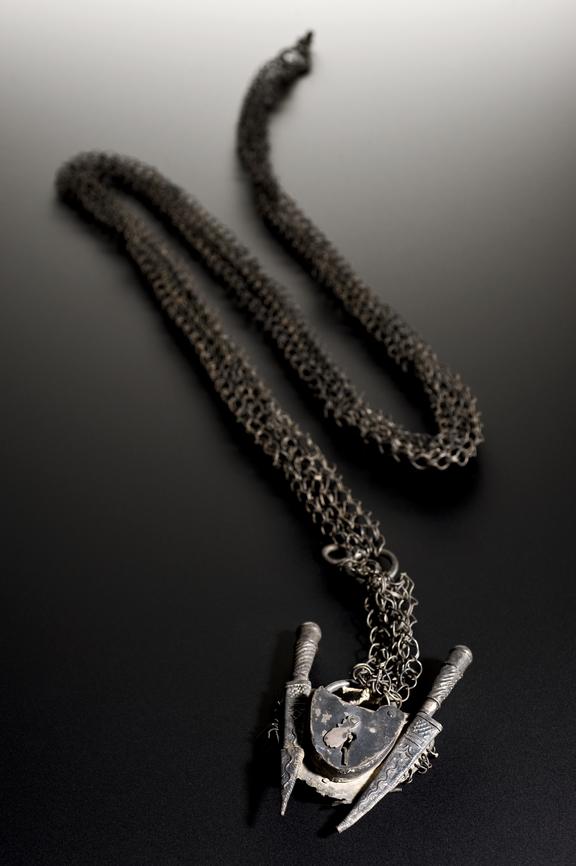





Executioner's chain of office, reputedly belonging to the executioner of the Asante [Ashanti] King Prempeh I, 1801-1900
A ‘chain of office’ is a mark of the importance of a position. This silver chainmail necklace was made in the 1800s. It reputedly belonged to the executioner during the reign of King Prempeh I (c.1870-1931; original throne name Nana Kwaku Dua III) also known as the Asantehene or ruler of the Asante Empire, a West African state in what is now Ghana. Human executions and sacrifices are recorded as being performed on behalf of Prempeh I, however it is unclear whether these practices continued after 1891.
The chain was purchased at auction on behalf of Sir Henry Wellcome in September 1921. The auction catalogue indicates that it was taken by a ‘Major Irving’ during the Asante Expedition of 1895-6. Irving is likely a misspelling of R. A. Irvine who was an Assistant Inspector in the Gold Coast Constabulary during in 1895-6, later rising the ranks to become a Major in the West African Frontier Force formed by the British Colonial Office.
Britain fought five wars against the Asante between the 1820s and 1900. The 1895-6 Expedition, also known as the Fourth Anglo-Ashanti War, is considered one of two minor wars since Prempeh I chose not to retaliate with his own army against British forces, attempting unsuccessfully to come to a peaceable agreement. The Expedition ended with the destruction and looting of the Asante people’s homeland and Prempeh I’s royal palace. He and around fifty other captives were subsequently exiled to the Seychelles. Prempeh I was allowed to return to his homeland in 1924 where he was recognised as Kumasihene – a chief in Kumasi, the capital city of the Asante Region – by the colonial government in 1926. He died in 1931 of natural causes.
Details
- Category:
- Ethnography and Folk Medicine
- Collection:
- Sir Henry Wellcome's Museum Collection
- Object Number:
- A636438
- Materials:
- silver
- Measurements:
-
overall: 1740 mm x 89 mm x 27 mm, .32 kg
pendant: 122 mm x 89 mm x 27 mm,
- type:
- necklace
- credit:
- Wellcome Trust (Purchased from Stevens)




